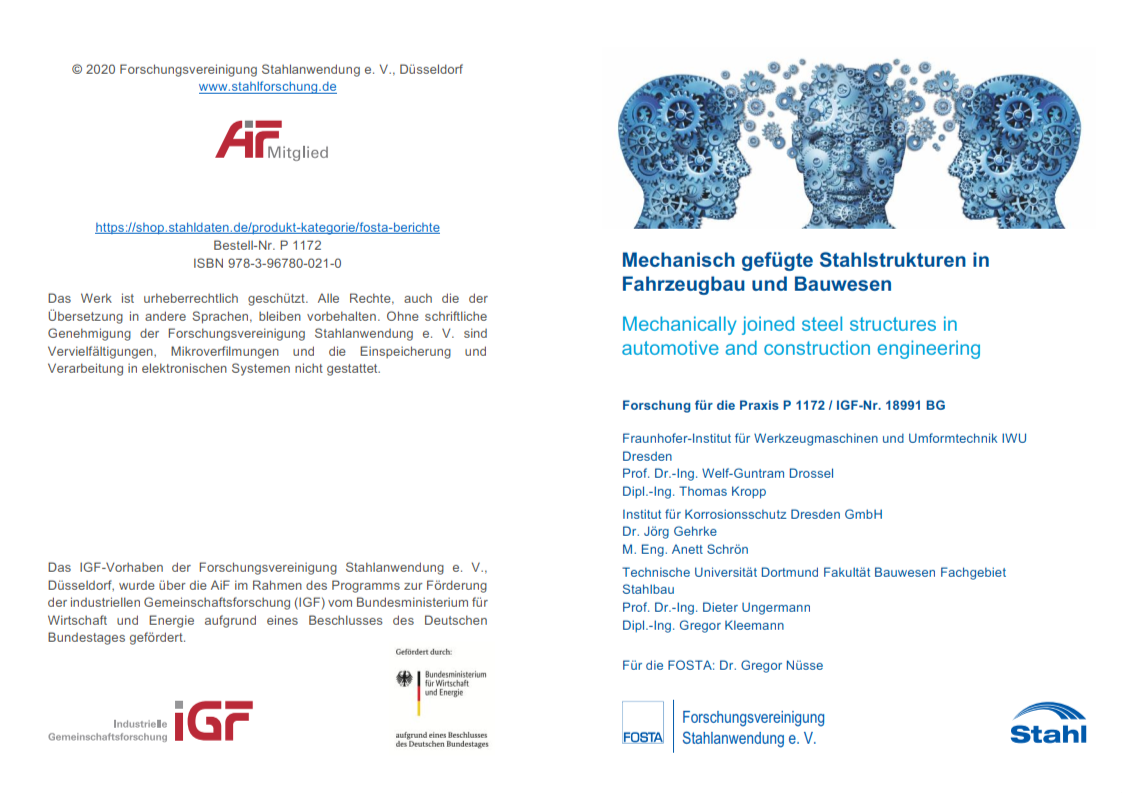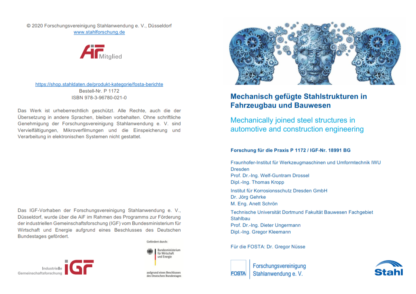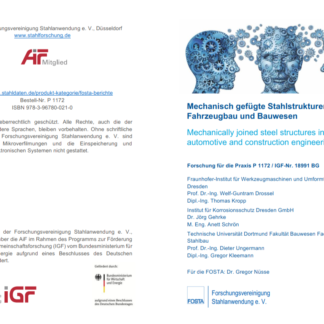Description
P 1172 – Mechanically joined steel structures in automotive and construction engineering
The research project shows that the prediction of tool geometry when clinching thick sheet metal is possible by means of numerically generated diagrams with accuracies in the range of approx. ± 10 % of the geometric sizes neck thickness and undercut. In order to make the diagrams manageable for the user, it is necessary to restrict the input parameters and thus the solution space. The transfer of the results into a software solution is suitable. By using a software solution, different materials could be defined for the sheet metal and many tool parameters could be varied, which is not possible with the
help of simple diagrams due to the large number of influencing parameters. The corrosion behavior of hot-dip galvanized and subsequently clinched sheet metal was investigated for the sheet thickness range which is typical for commercial vehicles. These samples were tested according to VDA 233 102, although short-term tests do not represent the corrosion behaviour under real conditions. Therefore they are not suitable for prediction regarding the protective effect and duration of zinc coatings and alloyed zinc coatings. The corrosion test only serves the purpose of a relative comparison of the
investigated configurations. In preliminary tests damage to the zinc coating caused by clinching had already occurred, so additional post-treatment of the clinch joints were investigated in order to restore the corrosion protection layer. Furthermore, the potential of hydrogen induced material failure of the clinch joints was investigated. The strip galvanized samples for the construction industry were only exposed to outdoor weathering and subsequently evaluated.
For the application of joining techniques in civil engineering, it is necessary to be able to clearly determine the load-bearing and deformation behaviour of the joining points for the respective load, which is usually done by means of normatively anchored design specifications. However, there is currently no standard regulation for the clinching joining process. The aim of the research project was therefore to determine the decisive influencing factors on the shear tensile strength, the stress distribution and the deformation behaviour of the connection and, in addition, to develop a design approach with which the maximum shear load can be determined for the clinch joint geometries investigated in the research project.
On the basis of experimental investigations of clinched upright-frames and the comparison of the results with bolted frames, it was shown that the low-deformation clinching joining technique has a positive effect on the deformation and stiffness of the entire structure due to the slip-free design.
Published in:
2020
Authors:
Prof. Dr.-Ing. W.-G. Drossel, Dipl.-Ing. T. Kropp, Dr. J. Gehrke, Prof. Dr.-Ing. D. Ungermann, Dipl.-Ing. G. Kleemann




